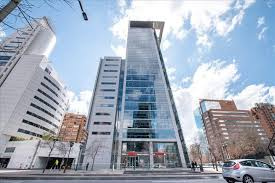What was Santiago like during colonial times?

What was Santiago like during colonial times?
What was Santiago like during colonial times? During colonial times, Santiago was a small but strategic settlement at the heart of Spanish Chile.
Its growth and significance were closely linked to Spain’s colonial ambitions in South America.
Foundation of Santiago
Santiago was founded on February 12, 1541, by the Spanish conquistador Pedro de Valdivia. The city was established as a key military and administrative base to secure Spain’s territorial claims in the region.
Geographic Location and Settlement
Santiago’s location in the central valley of Chile was ideal for agriculture and defense. Its proximity to the Andes mountains made it easier to protect against indigenous Mapuche resistance and external threats.
Early Struggles and Conflicts
Santiago faced constant threats from the indigenous Mapuche people, who fiercely resisted Spanish colonization. Frequent battles and skirmishes marked the early years, making survival a challenging task for settlers.
The Role of the Catholic Church
The Catholic Church played a central role in colonial Santiago. Missionaries and priests established churches, schools, and hospitals, influencing the city’s cultural, social, and political life. Religious institutions held great power.
Economic Activities and Agriculture
The early economy of Santiago relied heavily on agriculture, with settlers growing wheat, corn, and livestock. These agricultural products were essential for sustaining the colony and supplying the growing population.
Santiago as a Military Stronghold
As a colonial outpost, Santiago was heavily fortified to protect against indigenous uprisings and attacks. Fortresses, such as the Fortaleza de Santiago, were built to defend the city from external and internal threats.
Urban Development and Infrastructure
During the colonial period, Santiago’s urban layout was modest but functional. The city had narrow streets and small adobe houses, with a central plaza that became the heart of colonial life and governance.
Social Hierarchy and Classes
Santiago’s society was deeply stratified, with Spaniards and Creoles occupying the highest positions. Indigenous people, Africans, and mestizos (mixed-race individuals) occupied the lower rungs of the social ladder, often facing discrimination.
Decline and Resistance
By the late 18th century, Santiago’s growth stagnated due to external pressures and internal unrest. Resistance movements among indigenous groups and the growing frustration of local Creoles with Spanish rule foreshadowed future uprisings.
Cultural Influence of Spain
During colonial times, Santiago became a center of Spanish cultural influence. Spanish architecture, art, and traditions permeated the city, shaping local customs and daily life. The Catholic faith was deeply embedded in Santiago’s identity.
Trade and Commerce in Santiago
Santiago’s strategic location made it an important trade hub. Merchants brought goods from other parts of the Spanish empire, including silver from Peru, which contributed to the colony’s economic prosperity.
Slave Labor in Santiago
While the indigenous population was the primary labor force, African slaves were also brought to Santiago during colonial times. They worked on plantations and in urban areas, contributing significantly to the city’s economy.
Political Power of the Royal Government
The Spanish Crown exercised strong control over Santiago through its appointed governors. These officials held vast political power and implemented policies that sought to maintain Spanish authority and suppress any potential uprisings.
The Role of the Royal Court
The royal court in Santiago was responsible for administering justice and upholding Spanish law. The city’s legal system was influenced by both Spanish law and local customs, which created a complex legal environment.
Santiago as a Religious Center
The Catholic Church was the backbone of colonial Santiago, with the construction of churches, convents, and monasteries. Religious festivals, processions, and rituals dominated public life, reinforcing Spain’s control over the population.
Challenges of Colonial Santiago
Colonial Santiago faced numerous challenges, including frequent floods, earthquakes, and poor infrastructure. Despite these hardships, the city continued to grow, though it often struggled to maintain order and development.
Santiago’s Role in Spanish Chile
Santiago was the heart of Spanish Chile, not just in terms of governance but also in culture and military strategy. As the political center, it played a key role in defending the Spanish crown’s interests in South America.
Independence Movements and Legacy
By the late 18th century, frustrations with colonial rule sparked early independence movements in Santiago. The city’s role as a center of resistance foreshadowed its importance during the Chilean War of Independence, which would soon follow.



Leave a Reply